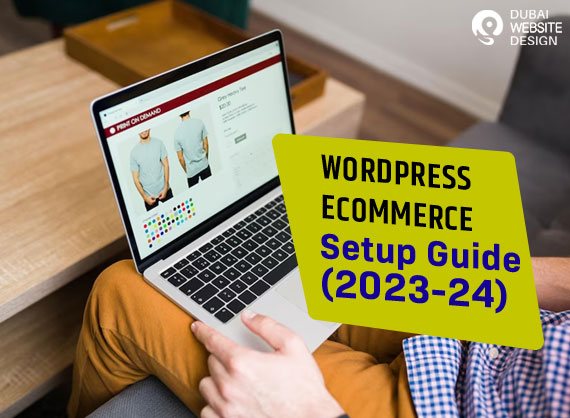In today’s age of digitalization, a large percentage of buyers are showing interest in exploring products online. Therefore, designing a functional website for your ecommerce site is a must. If you are looking for an easy-to-use platform for functional custom website development, WordPress is what you need. As a popular ecommerce platform, it provides plenty of options for customization and customization to ecommerce business owners.
In WordPress, you can get access to a range of plug-ins and themes. This highly efficient platform also enables users to add advanced ecommerce features to their websites. Moreover, the scalability and ease of use make WordPress ecommerce web design a perfect choice for small to large-scale ventures. If you are new to building an e-commerce website in WordPress, consider the following guide.
Pick the Right Domain
You can consider the domain to be the brain of your ecommerce website in WordPress. The domain title is generally the unique address of your site. Several sites make purchasing domains easy and affordable. Make sure that you choose a unique domain name. Searching for a common domain name can make it unavailable in WordPress.
The best way to pick a domain name is to chalk out a list of extraordinary titles. You can use the brainstorming technique to score the apt name for your new domain. Another small step is to pick a domain name that is relevant to your brand name. This will help your customers or audiences understand your website better.
Sign-Up With a Hosting Service Provider
This particular step might sound easy and simple. But you will find numerous hosting providers available out there. You will need to keep certain pointers in mind before you sign up for hosting for your ecommerce web design. To choose the right hosting service, you will need to think about the category of store you want to build. This will determine the kind of hosting service you require for your ecommerce business. However, it is wise to avoid shared hosting if you want to ensure high security for your ecommerce website.
Activate an Open-Source e-commerce plug-in Of Your Choice.
The next step is to install and activate an open-source plug-in that you think will suit your ecommerce web design the best. WordPress offers a free platform for users, and it is called Woo-commerce. The basic version of the plug-in is accessible free of charges. If you need to download certain extensions, you might have to pay minimal charges for it. This is one of the most affordable and simplest open-source plug-ins you can take advantage of when using WordPress. Here are some of the features that you can avail at woo-commerce.
- Cart and checking out
- Product pages
- Securing payments
- label printing and shipping
- Automated tax evaluations
- Integration with Google Analytics face book and more.
Finish Up the Miscellaneous Steps
As you are done activating your open-source plug-in, it is time to polish up your brand-new ecommerce web design. You can follow each step as per the pop-ups or instructions. The last step to finally set up your website is to fill in the specific contents of your business. The WordPress custom website development resents generic update options. Some of the examples of these steps are as follows:
- Incorporating adequate business information
- Choosing an option for payment
- Confirming the options for shipping
- Pick a complementary plug-in
- Activating the Jetpack
Pick a Solid Theme
The theme of your website will determine more than just the aesthetics. A solid theme can create a positive impact on your audience’s mind. WordPress offers a broad category of theme options that you can pick from. The ideal part about the available themes is that they are customizable. From changing colour palettes, replacing pictures, and editing typography to inserting codes, you can access anything. You can rebuild a website layout that looks nothing like the default one.
In order to sell your products and services with the help of WordPress, you need to begin by purchasing a domain. But you will need to make sure that you follow up with the further steps as instructed above. All of the steps mentioned above will help you make use of reliable plug-ins and take advantage of great web hosting.

